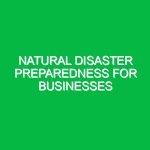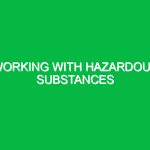Introduction
Emergency communication methods are vital tools in the Health, Safety, and Environment (HSE) domain. They encompass a range of strategies and technologies designed to relay critical information during emergencies. When a crisis strikes—be it a natural disaster, workplace accident, or environmental hazard—effective communication can significantly impact the outcome. The ability to share timely and accurate information can save lives, mitigate risks, and facilitate efficient response efforts. This article delves into various emergency communication methods, their relevance in HSE, associated risks, best practices, and regulatory frameworks that govern them.
The Importance of Emergency Communication Methods in HSE
In the HSE sector, emergencies can arise unexpectedly, demanding immediate and clear communication. Consider this scenario: during a chemical spill at a manufacturing plant, the immediate need arises to alert employees, local authorities, and emergency responders. Here, effective communication methods can mean the difference between a contained incident and a full-blown disaster.
Emergency communication methods serve several purposes:
– **Alerting and Notification**: Communicating the occurrence of an emergency promptly.
– **Information Dissemination**: Providing instructions on evacuation routes, safety protocols, and first-aid measures.
– **Coordination**: Ensuring that all stakeholders, including employees, management, and emergency services, are on the same page.
– **Post-Emergency Management**: Facilitating recovery and assessment following an incident.
Potential Hazards and Risks Associated with Emergency Communication Methods
Despite their critical role, emergency communication methods are not without hazards. Various risks can compromise their effectiveness, including:
1. Technology Failures
Technological glitches can impair communication systems. For instance, if a public address system fails during a fire alarm, individuals may not receive crucial evacuation instructions. Regular maintenance and testing of communication equipment are essential to mitigate this risk.
2. Human Error
Miscommunication can arise from human error, whether through incorrect information relay or misunderstanding of protocols. In a high-stress situation, the potential for mistakes increases. Implementing standardized communication protocols and regular training can help reduce these errors.
3. Environmental Factors
Natural disasters, such as hurricanes or earthquakes, can disrupt communication networks. For example, cell tower failures during a storm can sever connections when they are most needed. Having backup systems, like satellite phones or landlines, can ensure continuity of communication.
4. Language Barriers
In diverse workplaces, language differences can hinder understanding during emergencies. Implementing multilingual communication strategies and visual aids can assist in bridging these gaps.
Best Practices for Emergency Communication Methods
To ensure effective emergency communication, organizations should adopt certain best practices:
1. Develop a Comprehensive Emergency Communication Plan
Create a detailed plan that outlines procedures for various emergency scenarios. This plan should include:
– Roles and responsibilities of team members.
– A list of communication tools and platforms to be used.
– Clear protocols for internal and external communication.
2. Train Employees Regularly
Conduct regular training sessions to familiarize employees with emergency protocols and communication methods. For instance, a manufacturing company could conduct annual drills that simulate an emergency, allowing employees to practice using communication tools effectively.
3. Utilize Multiple Communication Channels
Relying on a single communication method can be risky. Instead, use a combination of:
– Text alerts
– Email notifications
– Social media updates
– Public address systems
This multifaceted approach ensures that information reaches everyone, regardless of the circumstances.
4. Establish Feedback Mechanisms
After an emergency, gather feedback on the communication process. This can help identify what worked and what needs improvement. For instance, after a fire drill, employees can provide insight into how effectively they received information and what challenges they faced.
5. Ensure Accessibility
Make sure that communication methods are accessible to all employees, including those with disabilities. This might involve using visual alarms, providing sign language interpreters, or ensuring that written materials are easy to read.
Regulations and Standards Governing Emergency Communication Methods
Various regulations guide emergency communication practices in the HSE domain. Understanding these is crucial for compliance and effective communication. Some of the key regulations include:
1. Occupational Safety and Health Administration (OSHA) Standards
OSHA provides guidelines that require employers to communicate hazards effectively. This includes having an emergency action plan that outlines how employees will be notified in case of an emergency.
2. National Fire Protection Association (NFPA) Codes
The NFPA develops codes and standards that address fire safety, including communication protocols during emergencies. For instance, NFPA 72 outlines the need for a reliable alarm system and clear communication channels.
3. Federal Emergency Management Agency (FEMA) Guidelines
FEMA emphasizes the importance of planning and training for emergencies. Their guidelines advocate for community preparedness and effective communication strategies before, during, and after disasters.
Real-Life Examples of Emergency Communication in Action
To further illustrate the importance of emergency communication methods, let’s consider some real-life scenarios:
Case Study 1: The Deepwater Horizon Oil Spill
In 2010, the Deepwater Horizon oil spill highlighted significant communication failures. Initial alerts about the explosion were delayed, leading to confusion among workers and emergency responders. Clearer communication could have facilitated a more efficient response, minimizing environmental damage and ensuring worker safety.
Case Study 2: Hurricane Katrina
During Hurricane Katrina in 2005, communication breakdowns exacerbated the disaster. Many residents were unaware of evacuation orders due to failures in communication systems. This underscores the necessity of robust emergency communication plans that include multiple channels and backup systems.
Conclusion
Emergency communication methods are essential in managing risks and ensuring safety in the HSE sector. By understanding potential hazards, implementing best practices, and adhering to regulations, organizations can significantly improve their emergency response capabilities. The importance of clear, timely, and effective communication cannot be overstated. In a world where emergencies can arise without warning, being prepared to communicate effectively can save lives and protect the environment. As we navigate the complexities of modern emergencies, let us prioritize communication as a fundamental component of health, safety, and environmental stewardship.


